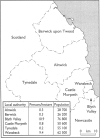Abstract
OBJECTIVE--To compare proportions of low birthweight babies and mean heights of schoolchildren between rural and urban areas at different levels of social deprivation. DESIGN--Cross sectional population based study classifying cases by Townsend material deprivation index of enumeration district of residence and by rural areas, small towns, and large towns. SETTING--Northumberland Health District. SUBJECTS--18,930 singleton infants delivered alive during January 1985 to September 1990 and resident in Northumberland in October 1990; 9055 children aged 5 to 8 1/2 years attending Northumberland schools in the winter of 1989-90. MAIN OUTCOME MEASURES--Odds ratios for birth weight less than 2800 g; difference in mean height measured by standard deviation (SD) score. RESULTS--Between the most deprived and most affluent 20% of enumeration districts the odds ratio for low birth weight adjusted for rural or urban setting was 1.71 (95% confidence interval 1.51 to 1.93) and the difference in mean height -0.232 SD score (-0.290 to -0.174). Between large towns and rural areas the odds ratio for low birth weight adjusted for deprivation was 1.37 (1.23 to 1.53) and the difference in mean height -0.162 SD score (-0.214 to -0.110). Results for small towns were intermediate between large towns and rural areas. CONCLUSIONS--Inequalities in birth weight and height exist in all rural and urban settings between deprived and affluent areas. In addition, there is substantial disadvantage to living in urban areas compared with rural areas which results from social or environmental factors unrelated to current levels of deprivation.
Full text
PDF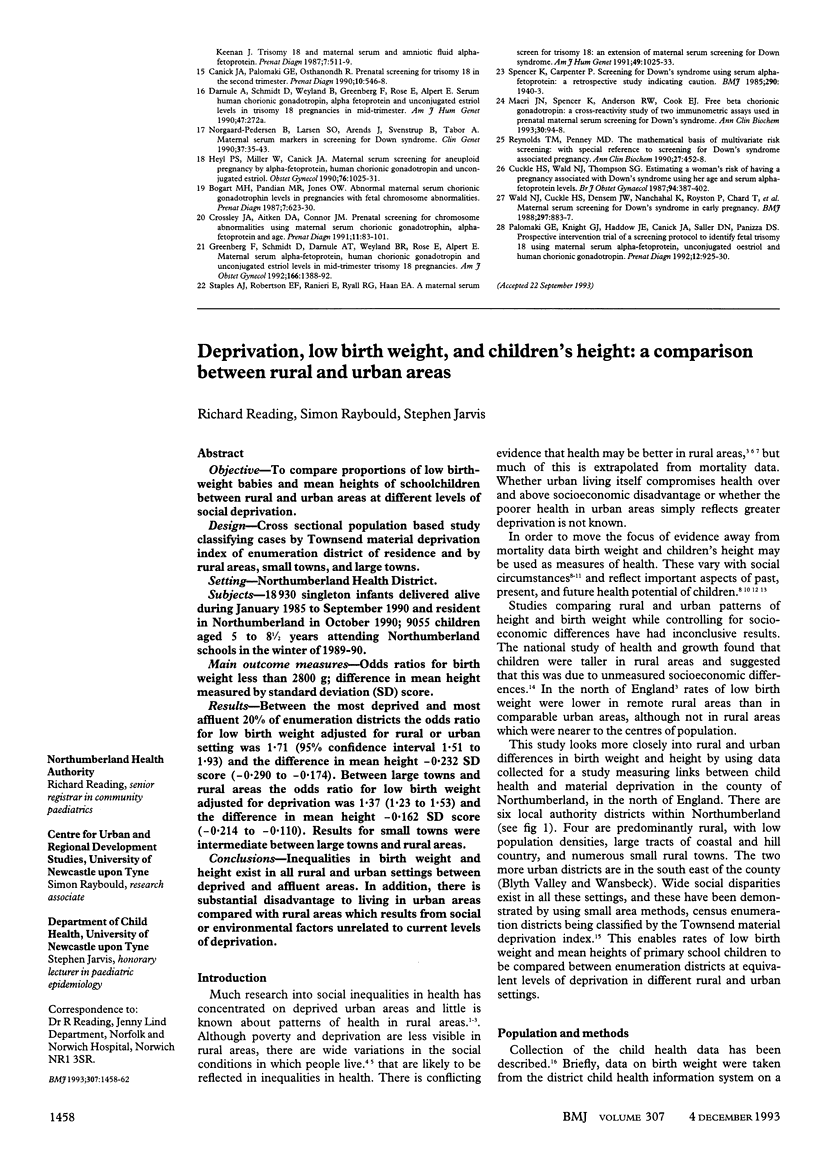
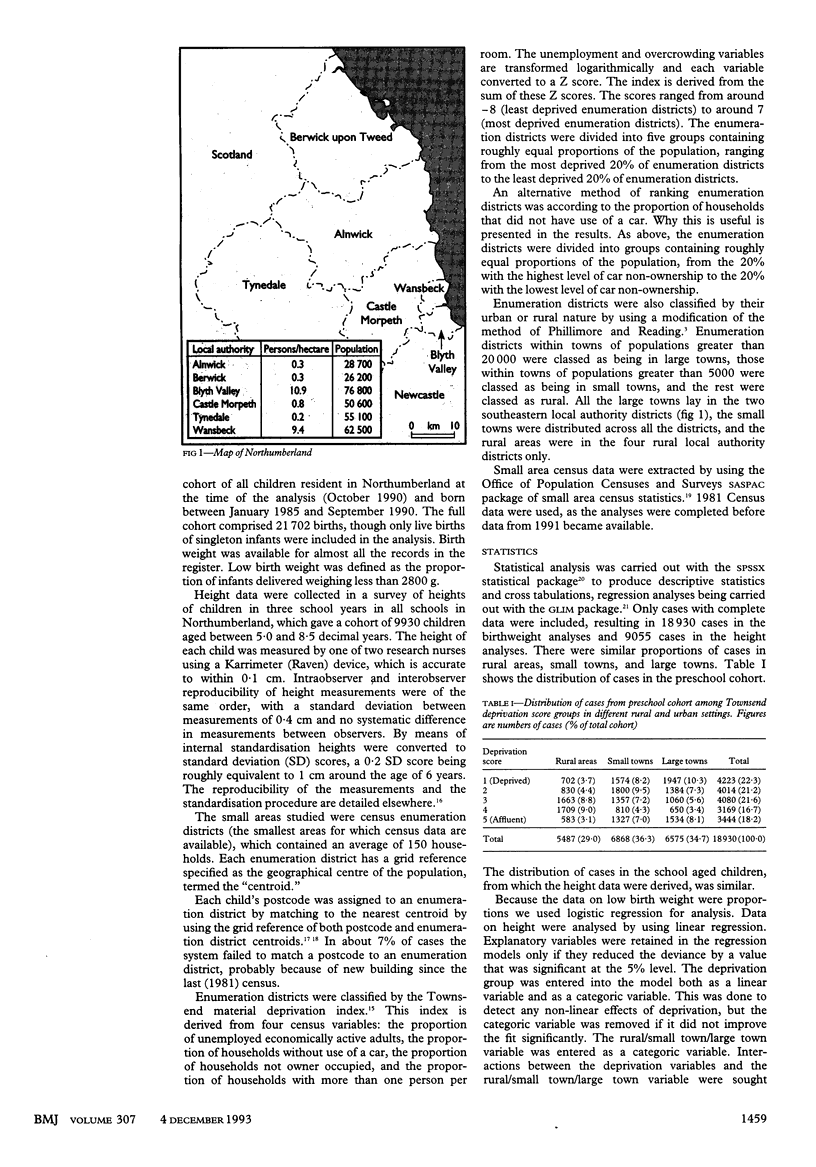
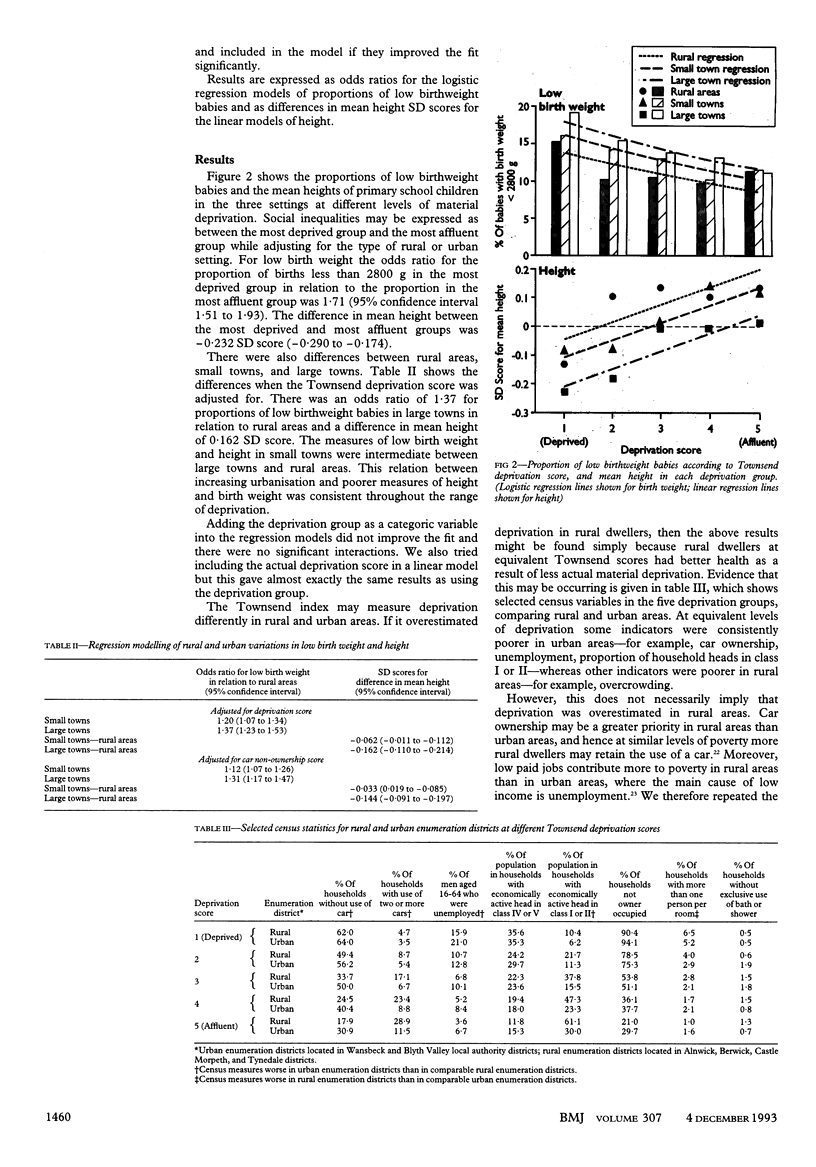
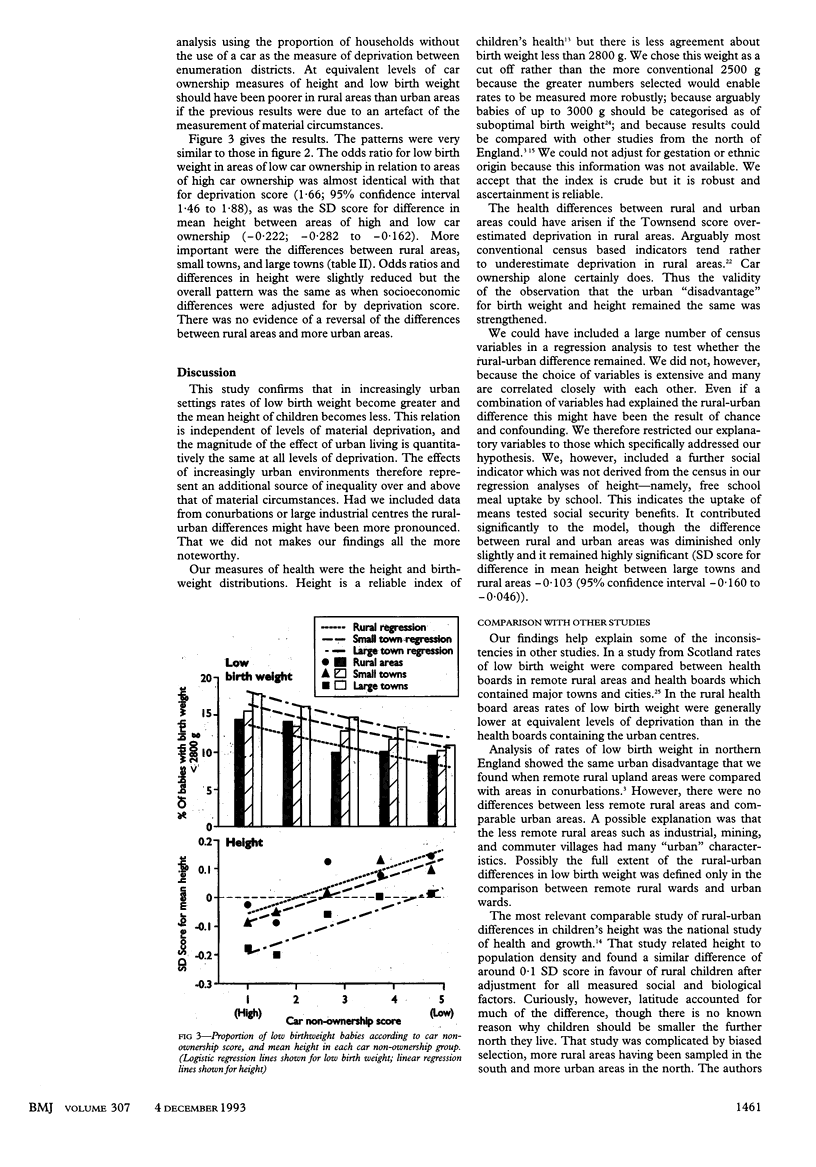
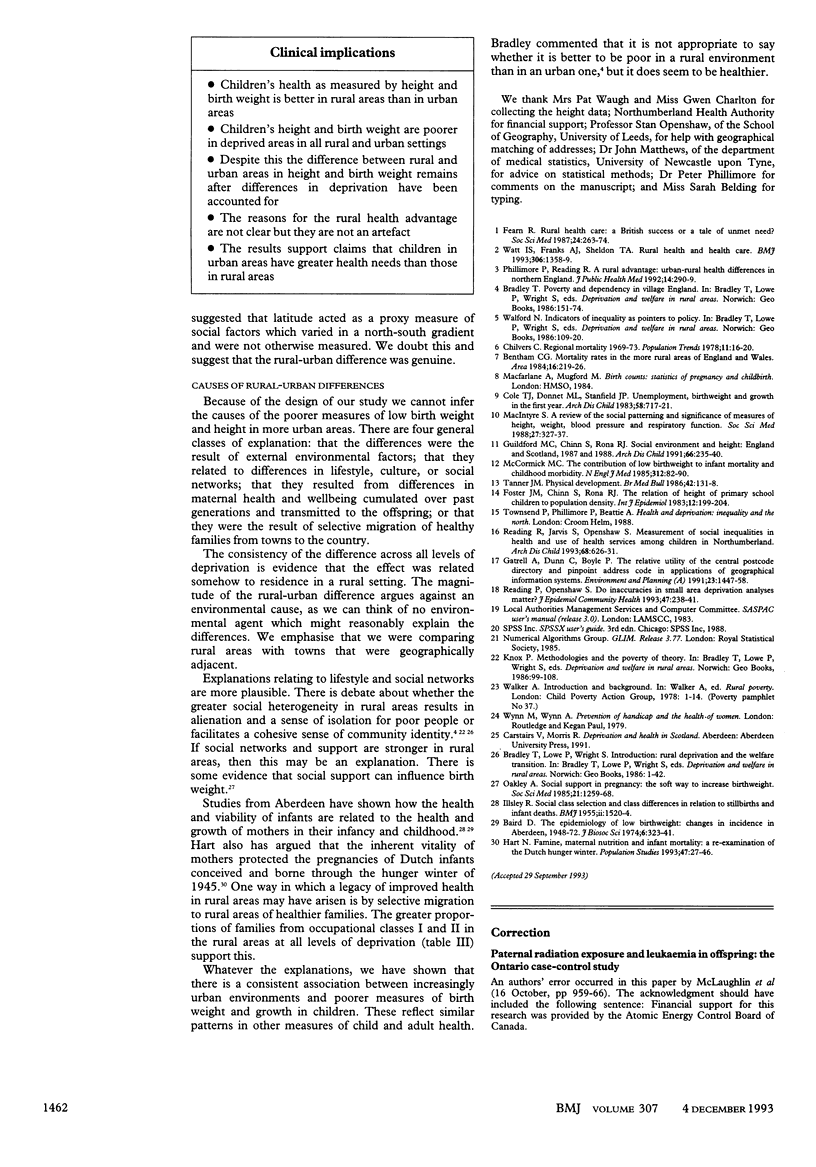
Images in this article
Selected References
These references are in PubMed. This may not be the complete list of references from this article.
- Baird D. The epidemiology of low birth weight; changes in incidence in Aberdeen, 1948-72. J Biosoc Sci. 1974 Jul;6(3):323–341. doi: 10.1017/s0021932000009688. [DOI] [PubMed] [Google Scholar]
- Cole T. J., Donnet M. L., Stanfield J. P. Unemployment, birthweight, and growth in the first year. Arch Dis Child. 1983 Sep;58(9):717–721. doi: 10.1136/adc.58.9.717. [DOI] [PMC free article] [PubMed] [Google Scholar]
- Fearn R. Rural health care: a British success or a tale of unmet need? Soc Sci Med. 1987;24(3):263–274. doi: 10.1016/0277-9536(87)90053-0. [DOI] [PubMed] [Google Scholar]
- Foster J. M., Chinn S., Rona R. J. The relation of the height of primary school children to population density. Int J Epidemiol. 1983 Jun;12(2):199–204. doi: 10.1093/ije/12.2.199. [DOI] [PubMed] [Google Scholar]
- Gulliford M. C., Chinn S., Rona R. J. Social environment and height: England and Scotland 1987 and 1988. Arch Dis Child. 1991 Feb;66(2):235–240. doi: 10.1136/adc.66.2.235. [DOI] [PMC free article] [PubMed] [Google Scholar]
- Hart N. Famine, maternal nutrition and infant mortality: a re-examination of the Dutch hunger winter. Popul Stud (Camb) 1993 Mar;47(1):27–46. doi: 10.1080/0032472031000146716. [DOI] [PubMed] [Google Scholar]
- ILLSLEY R. Social class selection and class differences in relation to stillbirths and infant deaths. Br Med J. 1955 Dec 24;2(4955):1520–1524. doi: 10.1136/bmj.2.4955.1520. [DOI] [PMC free article] [PubMed] [Google Scholar]
- Macintyre S. A review of the social patterning and significance of measures of height, weight, blood pressure and respiratory function. Soc Sci Med. 1988;27(4):327–337. doi: 10.1016/0277-9536(88)90266-3. [DOI] [PubMed] [Google Scholar]
- McCormick M. C. The contribution of low birth weight to infant mortality and childhood morbidity. N Engl J Med. 1985 Jan 10;312(2):82–90. doi: 10.1056/NEJM198501103120204. [DOI] [PubMed] [Google Scholar]
- Oakley A. Social support in pregnancy: the 'soft' way to increase birthweight? Soc Sci Med. 1985;21(11):1259–1268. doi: 10.1016/0277-9536(85)90275-8. [DOI] [PubMed] [Google Scholar]
- Phillimore P., Reading R. A rural advantage? Urban-rural health differences in northern England. J Public Health Med. 1992 Sep;14(3):290–299. [PubMed] [Google Scholar]
- Reading R., Jarvis S., Openshaw S. Measurement of social inequalities in health and use of health services among children in Northumberland. Arch Dis Child. 1993 May;68(5):626–631. doi: 10.1136/adc.68.5.626. [DOI] [PMC free article] [PubMed] [Google Scholar]
- Reading R., Openshaw S. Do inaccuracies in small area deprivation analyses matter? J Epidemiol Community Health. 1993 Jun;47(3):238–241. doi: 10.1136/jech.47.3.238. [DOI] [PMC free article] [PubMed] [Google Scholar]
- Watt I. S., Franks A. J., Sheldon T. A. Rural health and health care. BMJ. 1993 May 22;306(6889):1358–1359. doi: 10.1136/bmj.306.6889.1358. [DOI] [PMC free article] [PubMed] [Google Scholar]



